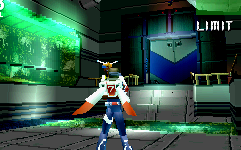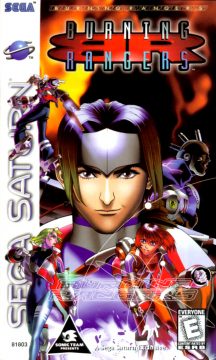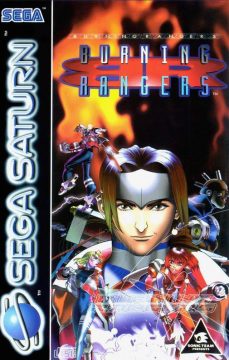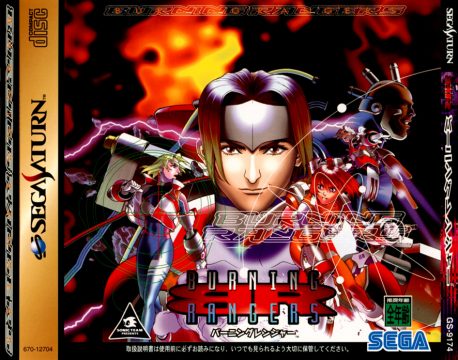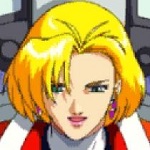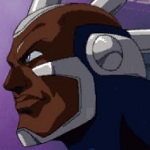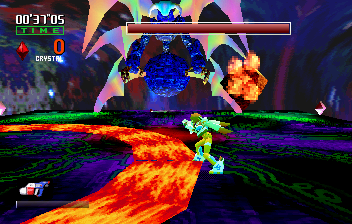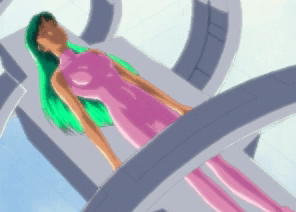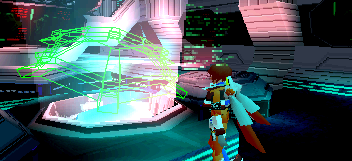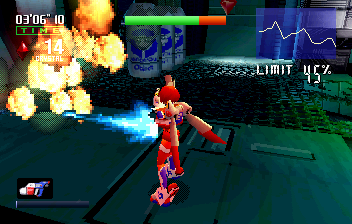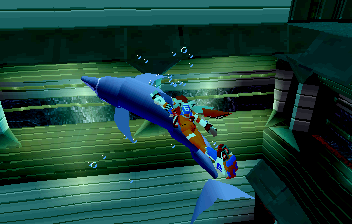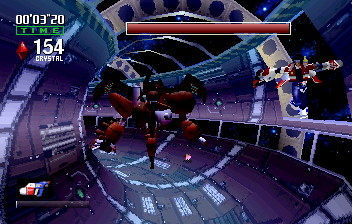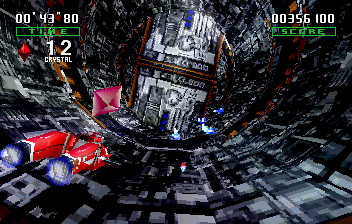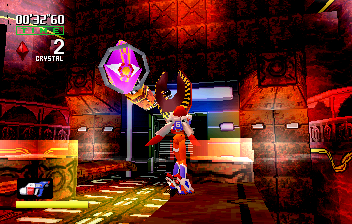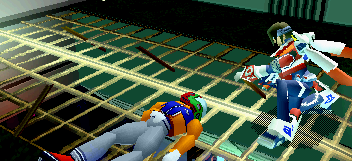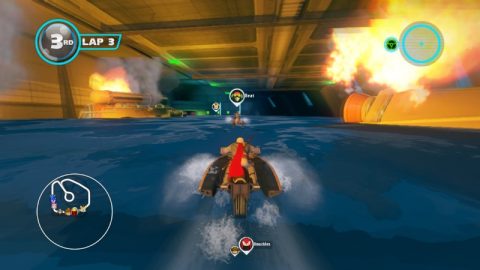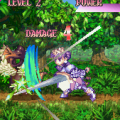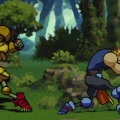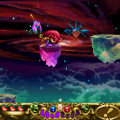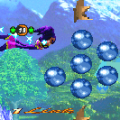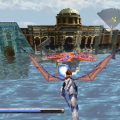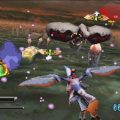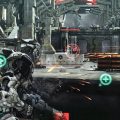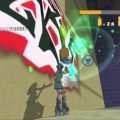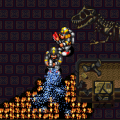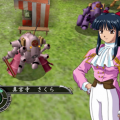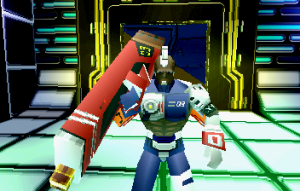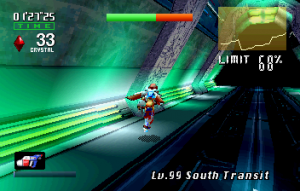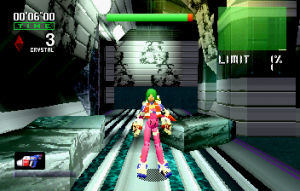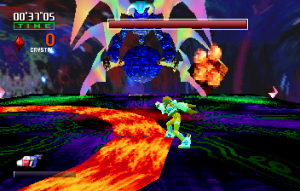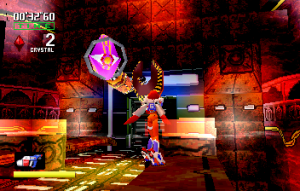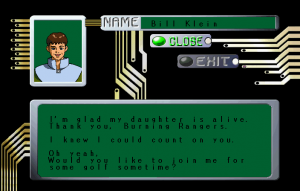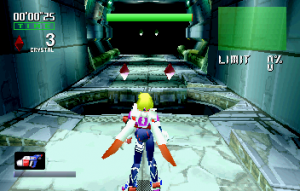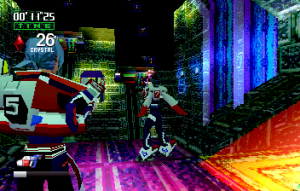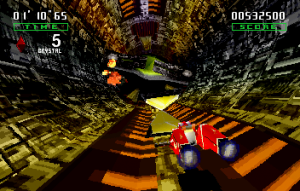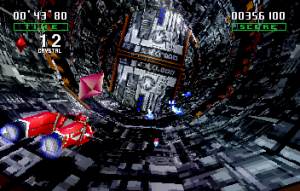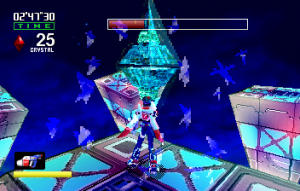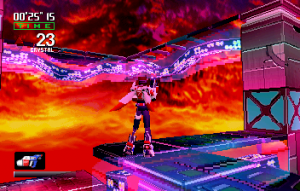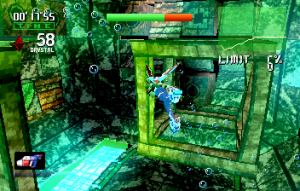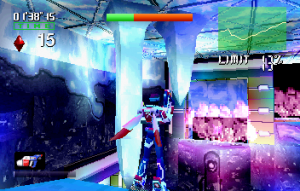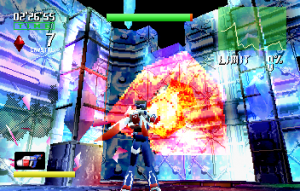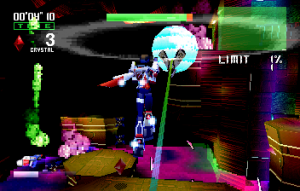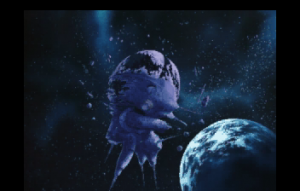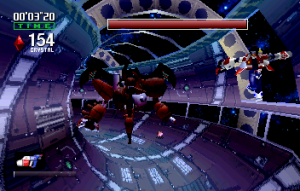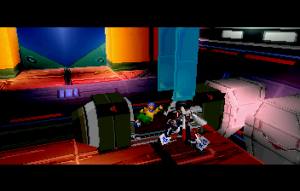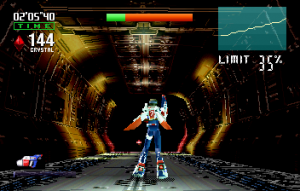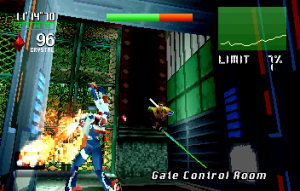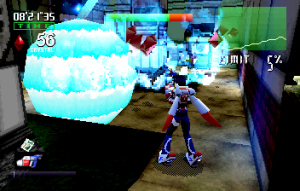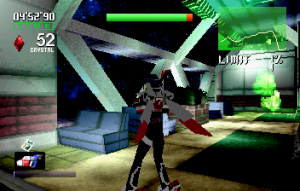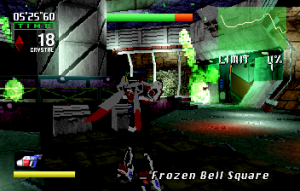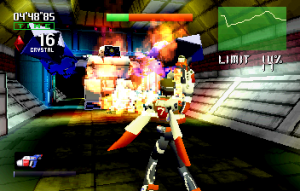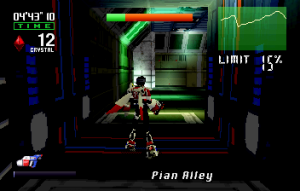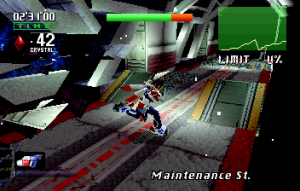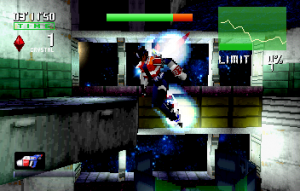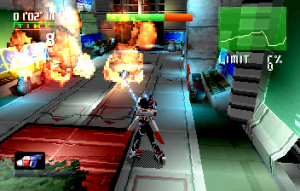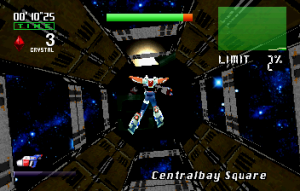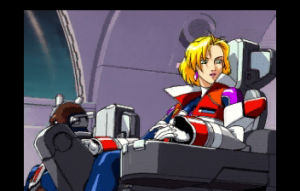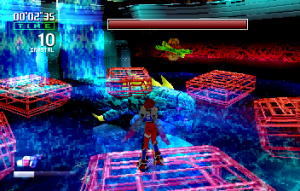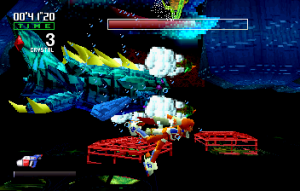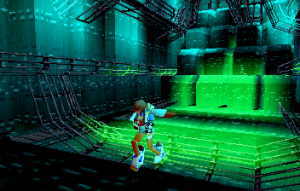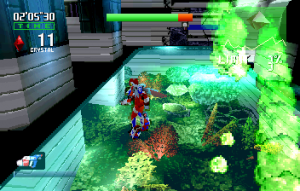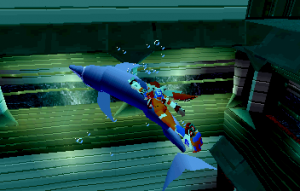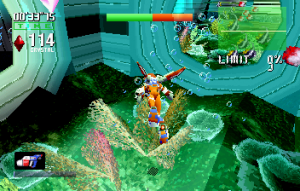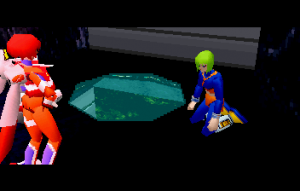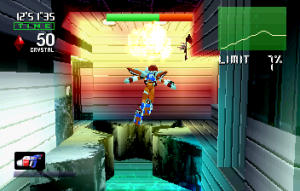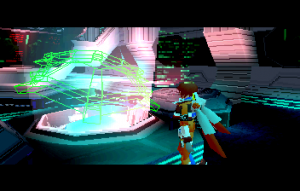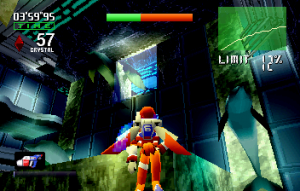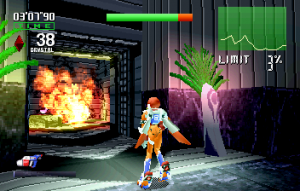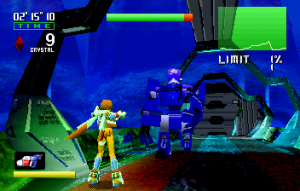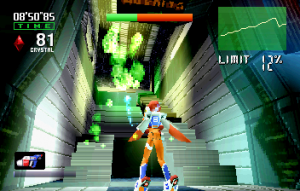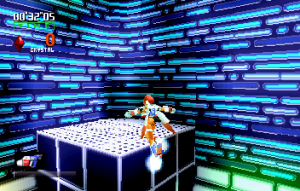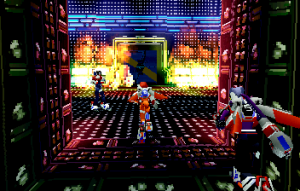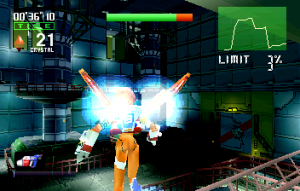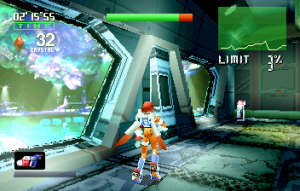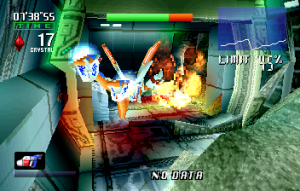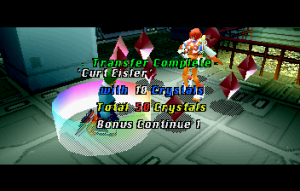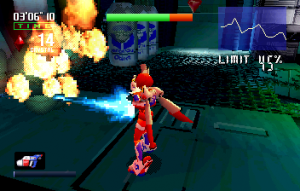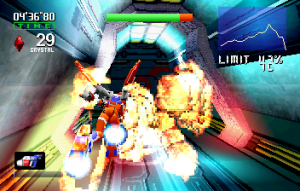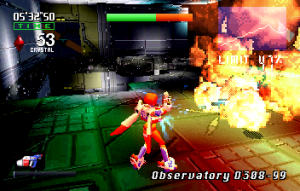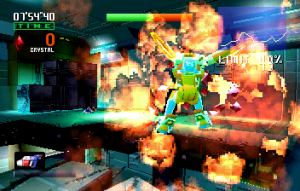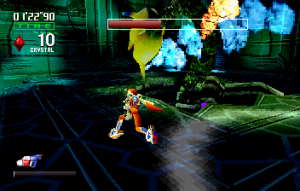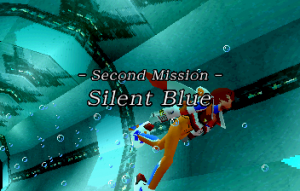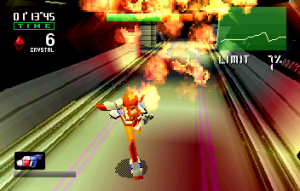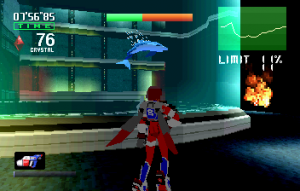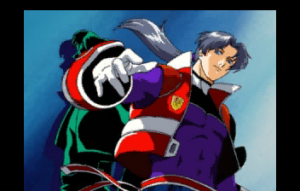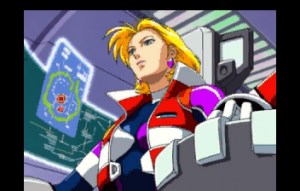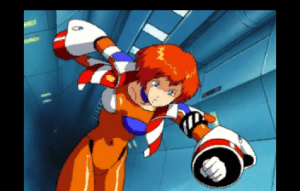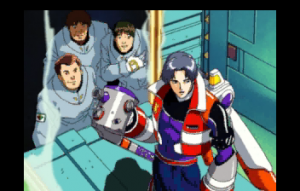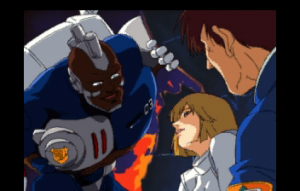Video games that let you take the role of a fire fighter are not very common, let alone fire fighters with jetpacks and laser guns. Sonic Team’s Burning Rangers is a unique take on the already rare theme of firefighting, allowing players to take on infernos in a sci-fi setting. In the near future, mankind’s biggest threats are “man-made terrors of the new age,” and it is the Burning Rangers’ job to rescue people trapped in these disasters.
Characters
Shou Amabane
One of the two main player characters. After seeing a Burning Ranger killed in a fire, he takes it upon himself to become one. His Japanese voice actor, Hikaru Midorikawa, also played Tamahome in Fushigi Yuugi.
Tillis
The other player character. She was orphaned after a fire killed her parents. She chose to become a Burning Ranger to prevent the same fate for others after being raised in a lonely foster care. Her Japanese voice actress, Yuko Miyamura, also voices Asuka Langley in Neon Genesis Evangelion.
Chris Parton
She is the leader of the Burning Rangers. She acts as the game’s navigator. She sits in the Rangers’ ship telling the player where to go next and warns of upcoming dangers. She voiced by Hiroko Kasahara in the Japanese version, who is also known for voicing Ishtar in Macross II.
Lead / Reed Phoenix
Acts as the voice of reason for the newer rangers. Of all the American voice actors, his might be the weakest. Voiced by Tomokazu Seki in Japan, who is also known for playing Chichiri in Fushigi Yuugi.
Big Landman
The oldest and most experienced ranger. He was injured in an accident but was able to carry on through his will and a rebuilt body. Voiced by (Ryuzaburo Ohtomo) in Japan who also played Kabapu in Excel Saga.
Iria / Ilia Klein
Shows up later in the game. After being infected with an incurable illness, her father put her into hyper sleep inside a giant spaceship on a crash course with Earth. She tells the rangers how to stop it and ends up joining the team. Her Japanese actress, Aya Hisakawa, voiced Sailor Mercury in Sailor Moon.
By Saturn game standards, the voice acting is decent. You can clearly tell what Chris is saying over the communication system, which is essential for getting through most of the levels. Some of the lines that come from rescued survivors or fellow teammates are a bit cheesy, but it fits the game’s tone. Although the brevity of the story prevents any real character development, the dialogue in the game does make the Burning Rangers come across as a team working together rather than a group of individual firefighters. Sometimes they poke fun at each other while other times expressing concern for one another. The writing isn’t anything special, but it gets the job done.
Before the game starts, you have an option between either Shou or Tillis. Other than changes in the dialog during the levels and a few cutscenes, there isn’t any difference between the two. You are then thrown into a Tron-esque tutorial level where you are shown all of the basics of the game. Gameplay wise it isn’t anything special but it does the job of teaching the player the basics.
The primary goal in each level is to rescue as many survivors and extinguish fires along the way, before defeating the boss at the end of the stage. Being developed by Sonic Team, the game also puts an emphasis on speed by punishing you if go too slow and rewarding you with bonus points at the end depending on how quickly the level is completed. If you take too long, the area becomes more and more dangerous, as indicated by the “Danger Limit Readout System”. For every 20 percent that the meter goes up, the surrounding area will be engulfed in flames and explosions for a few seconds. If it reaches 100% the flames will constantly bombard you to the point where you might as well restart from the last checkpoint. You can reduce this meter by extinguishing smaller flames present throughout the level.
In order to power their shields and rescue survivors, the rangers must collect crystals scattered throughout the level or extinguish fires. Just like in Sonic the Hedgehog games, getting touched will cause you to drop all of the crystals you had collected and you must gather them quickly before they disappear. If you take damage without holding a crystal, you die. They are also used to transport survivors to safety. Five crystals are required to transport a civilian, while having at least ten grants a continue after dying.
Your ranger has two projectiles at their disposal. The first is a quick Pulse that can extinguish small flames and turns them into crystals. The second is a Laser Blast triggered by holding the shoot button. It can take out bigger flames and is the only way to damage enemies and bosses, but won’t generate any crystals.
Because flames are pretty much an immobile target and bombarding you with a plethora of enemies wouldn’t really fit the theme of the game, Burning Rangers relies on throwing out surprise traps to create difficulty. Before an explosion, there will be an audio cue such as a high pitched whistle to alert you of an incoming danger. Sometimes this works, but if you’re asking Chris for directions or if you’re just trying to figure out where to go next, it is very easy to get distracted and have some pipe or canister blow up in your face. Even worse is when walls collapse because the cue for a damaged wall is much quieter and you’ll often find yourself either losing all your crystals or getting sucked into outer space without realizing what had happened.
Burning Rangers also suffers from many of the common problems that plagued early 3D platformers. Probably the biggest flaw in the game would be the camera. Occasionally you may find yourself fighting a group of enemies in a tight area and the camera will fight against you, making it hard to get the enemy in your character’s line of sight. You’ll often find yourself jumping around in order to avoid projectiles and at the same time the camera will be struggling to keep up, causing you to blast randomly and hoping to take out the enemies before they kill you.
On top of an uncooperative camera, the game also has difficulty with movement. Your character takes wide turns which makes moving around feel stiff and navigating flames and enemy projectiles irksome. The game is playable with a both a regular Saturn controller and an analog pad, but players may find it a hassle moving around tight areas while using either one. However, much of this can be overcome through the use of the jetpack, which is arguably the most entertaining aspect of the game. There are plenty of cool maneuvers you can pull off with it, such as rolls, dodges and somersaults. Jetting around from platform to platform rescuing survivors provides a different kind of satisfaction that really isn’t found in other games.
Missions:
First Mission – Fallen Memory
The initial stage takes place in a burning plant and has you rescuing workers. At the end of the level you face off against a giant mutated plant that was responsible for the fires. It’s pretty easy to defeat since the camera is pretty reliable in this area and your blaster charges pretty quickly, allowing you to take down the boss fast.
Second Mission – Silent Blue
This is an underwater research facility. You get to ride a dolphin, which helps you getting through the level. Scattered throughout are robots that shoot little energy balls at you. They can be a hassle to take down in small corridors when the camera is moving around all over the place. The boss here is a giant fish and isn’t much of a challenge if you keep moving. The racetrack “Burning Depths” in Sonic & Allstars Racing Transformed is based on this stage.
Third Mission – Gravity Zero
As the name would suggest, this stage takes place on a giant space colony that was hit by a meteorite. You have to rescue some stubborn workers from the station. The fire has also caused the machines to go haywire, and as a result they try to kill you. There are some really annoying zero gravity areas scattered throughout the level, which are difficult to maneuver around in. The boss here is some sort of robot made of junk, and its weak spot is its glowing core. Like the other bosses before, it doesn’t pose much of a threat.
Fourth Mission – Winged Cradle
Finally, you enter a giant space ship on a collision course with earth. There’s only one person to rescue in this level, Ilia Klein. There’s also a vehicle segment thrown in where you get to pilot the rangers’ spaceship. Unfortunately, you don’t get to extinguish fires from a flying firetruck. Instead you just dodge obstacles and blast debris. There’s also a really long and somewhat pointless platforming section that gets pretty frustrating. There’s no time limit or risk of explosions here, so its inclusion is kind of odd. After a few midbosses, you take on a giant monster. The final boss can be a challenge. It shoots tornadoes and rings of fire at you, with only a short time frame to damage it.
Upon completion of a level, you’ll sometimes get e-mail from the people you have rescued. Most of the time it’s nothing too special – just some thanks and people telling you what they plan on doing with their lives. However, it is also possible to rescue members of Sonic Team, and they’ll tell you codes that let you play as the other rangers. Unfortunately, the code will only work for one character on one stage, meaning you’ll have to go through levels over and over again if you wanted something specific like the code to play as Lead Phoenix in stage 2. Claris Sinclair and Elliot Edwards from NiGHTS into Dreams also make cameos as survivors to rescue.
Burning Rangers adds to its replay value by randomizing levels after completing the main game. These have the same layout as the standard levels, but the location of switches and survivors, as well as which doors are locked or unlocked changes each time you pick that level. As a result, areas that couldn’t be reached during the first play-through may become accessible in subsequent runs.
Another important aspect to mention is the game’s audio. For the most part, you’re playing without music, save for the boss fights and the flying minigame. The audio is very well done. You actually feel like you’re surrounded by flames, and the jetpacks and laser guns have a nice futuristic/sci-fi ring to them. There are also three songs with lyrics spread throughout the game; one in the intro, one during the menus, and one during the credits. They all have a jazzy sound to them with some nice horns that help create a kind of mid ‘90s action cartoon/anime feel. All of these tunes are surprisingly catchy, even if the lyrics do seem a little odd and out of place for a game about firefighters with jetpacks.
Burning Rangers is a difficult game to recommend to a general audience. There are many problems that keep it from being a solid platformer and often it will just be frustrating if you’re used to the tight controls of the more popular platformers of the time. However, some will definitely find the game enjoyable. The level design is pretty well done, encouraging exploration and working well with the movement of the characters. The theme alone is also a huge drawing factor, due to the fact that there are so few firefighting games out there to play, let alone one that takes place in the future. Since the game was released so late in the Saturn’s life, it serves to show off some of the capabilities of the console as well, with great lighting and audio effects. In this day and age, Burning Rangers isn’t a game for everybody, but it is enjoyable gem for those that are willing to put the time into it.
Since Burning Rangers was released near the end of the Saturn’s life cycle in North America and Europe, copies can be extremely expensive to come by. The Japanese version is far cheaper, but without some knowledge of basic Japanese, the navigator will basically be useless. The Japanese version also comes with a mini CD containing the game’s vocal tracks. Sega has not completely forgotten the series – one of the tracks in Sonic and Sega All-Stars Racing Transformedis based on Burning Rangers, completed with remixed theme music. The Theme song is also featured in the rhythm game Samba de Amigo.
